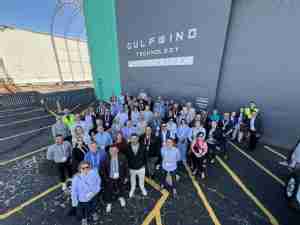In today's environment, the nation's seaports and maritime assets are vulnerable to asymmetric threats. With thousands of ships to track and volumes of data to process, watchstanders face a daunting challenge.
The SVF solves that problem by allowing watchstanders to define operational relevancy to their local situation based on Means, Motive, and Opportunity. Means is an estimate of a vessel's innate potential to cause harm; for example, can it carry deadly cargo? Motive is an estimate of a crew's and owner/operator's predisposition to cause harm; specifically, the US Navy assesses the motives of maritime organizations and individuals as they emerge over time within a maritime area of interest. The SVF end-users then assess the relevancy of these emerging facts and alter their SVF focus, accordingly. Opportunity is an estimate of the vessel's proximity to a protected interest -- based on position, course, and speed.
SVF is a web application that runs on a networked server and is available remotely through generic web browsers. It does not require installation on users' computers. The SVF server can interface with any networked maritime data source and it works with classified or unclassified data. Users operate SVF through two web pages: the SVF Dashboard and the SVF Focus Editor.
The SVF Dashboard shows a dynamically updated "live" visualization of the total threat picture and it provides aids to access relevant information on any vessel. A field experiment has shown that the Dashboard enables users to identify the 10 most important vessels out of several thousands in about 10 seconds.
The SVF Focus Editor enables users to dynamically configure the calculation of Means, Motive, and Opportunity specific to their individual operational responsibilities. Likewise, a field experiment also has shown that the Focus Editor enables users to make significant changes to the configuration in about 30 seconds.
Field assessments over three years show that watchstanders using SVF technology significantly improved their ability to see and understand a threat picture for all vessels in an area of interest, identify the most suspicious vessels, explain a vessel's suspicion/relevancy score, and effectively allocate assets to counter threats.
"The SVF technology can also be adapted to many applications beyond the maritime domain, where it is necessary to monitor complex evolving situations and dynamically identify events or objects that require attention," said Dan McFarlane, principal investigator, Lockheed Martin Advanced Technology Laboratories (ATL).
Lockheed Martin Corporation is investing independent research and development funds to transition the SVF from the laboratory to production as part of an ATL Technology Transition Initiative. The SVF will be the new threat assessment capability for the Maritime Integrated Domain Awareness Solution (MIDAS) -- a leading-edge capability produced by Lockheed Martin.
The Defense Advanced Research Projects Agency sponsored early research and development of SVF as part of the Fast Connectivity for Coalitions and Agents Program (Fast C2AP)-a three-phase, applied research initiative begun in 2005. The goal was to examine the feasibility of web-based composition and application of intelligent software agents in maritime operational environments. The US Navy's 6th Fleet in Naples, Italy, integrated and successfully tested the technology.









